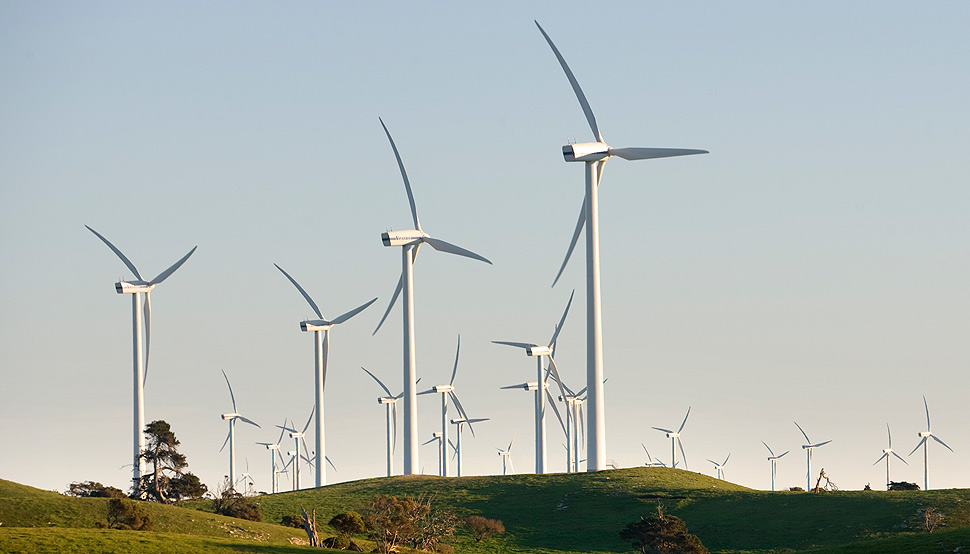Embodied in Steel
Since 1915 the steel industry has been an essential part of Australia and its economy. In August 2011, BlueScope announced it was restructuring its Australian operations and would largely exit the Australian export business.
Since 1915 the steel industry has been an essential part of Australia and its economy. In August 2011, BlueScope announced it was restructuring its Australian operations and would largely exit the Australian export business.
Key features of the restructure included:
- Shut-down of No.6 Blast Furnace at Port Kembla, with annual production reduced to 2.6 million tonnes.
- Closure of No. 4 Coke Ovens Battery, No. 3 Basic Oxygen Steelmaking (BOS) furnace and No. 1 slab caster.
- Closure of the Hot Strip Mill and mothballing of Metal Coating Line No.5 at Western Port.
The effect of the closures on the Company's environment footprint has been profound. Absolute levels of environmental impact such as emissions, and energy and water consumption have been reduced; while intensity based metrics have increased.
BlueScope manage environmental risks and impacts through the use of a LAWWNE framework, which seeks to:
- Reduce our environmental impact on Land, Air, and Water
- Reduce generation of Waste and Noise
- Minimise our use of Energy and the generation of greenhouse gas emissions
Through the use of this framework we also seek to conserve scarce resources by reusing and recycling material.
BlueScope Reports its LAWWNE performance in the annual Community, Safety and Environment (CSE) Report. In the year 2011-2012;
BlueScope produced 4.7 million tonnes of raw steel in its steelmaking facilities.
|
|
Non-compliances |
Comments |
|
LAND |
1 |
Actions were taken that prevented any actual contamination from occurring. |
|
AIR |
18 |
No significant air related incidents. Two fines of $1500 each. Oxides of Nitrogen: 6555 tonnes Sulphur Dioxide: 6782 tonnes Fine Particulate: 1711 tonnes |
|
WATER |
14 |
Non-compliances relating to water have reduced >50% over the last 5 years. Freshwater Intensity: 2.1 kilolitres (excludes recycled water) Freshwater Use: 9870 Megalitres Recycled Water Use: 7006 Megalitres |
|
WASTE |
0 |
Material efficiency (materials converted to products and by-products): 95.4% More than 1.7 million tonnes of by-products were sold for a wide variety of uses. |
|
NOISE |
0 |
0 regulatory non-compliances relating to noise over the past two decades |
|
ENERGY |
0 |
Energy Use: 114 Petajoules Energy Intensity: 24.5 Gigajoules/tonne raw steel
BlueScope Australian Net Energy Consumption: 86,649,746 Gigajoules (excludes consumption of energy produce internally) |
Non-compliances are statutory non compliances with environmental licensing requirements
Greenhouse Gas Emissions
Green house gas intensity: 2.5 tonnes CO2e per tonne of raw steel
Scope 1 (direct) and Scope 2 (indirect) emissions
|
|
Million tonnes CO2e |
|
BlueScope |
11.4 |
|
BlueScope Australia and New Zealand |
10.63 |
|
BlueScope Australia |
8.614773 |
BlueScope strives to progressively reduce its emissions and continues to play an active role in the global steel industry’s efforts to reduce greenhouse gas emissions. BlueScope are also committed to reducing the greenhouse gas intensity of our products and improving the energy efficiency of our operations. Carbon, in the form of processed metallurgical coal (coke) and pulverised coal, is the reducing agent used to convert iron ore to iron in a blast furnace. Carbon dioxide and other greenhouse gases are generated as unavoidable by-products of this process. The laws of chemistry, physics and thermodynamics dictate the amount of carbon used in the blast furnace. Current carbon usage is close to theoretical minimum levels due to our efficient furnace operations and practices.
For more information see the full CSE Report for 2011-2012, http://csereport2012.bluescopesteel.com
For more information on National Greenhouse and Energy Reporting (NGER), http://www.cleanenergyregulator.gov.au
What else is embodied in steel supplied by BlueScope? See more of BlueScope steels responsible supplier credentials here: Is BlueScope a responsible sustainable supplier?

